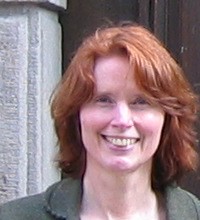We spent the rest of class identifying and thinking about the structure and "moves" of creative nonfiction authors use to design and orchestrate the effects in their essays. You worked in groups and we created a collaborative set of observations which (appropriately) ended up the perspective of the author in the center of the board. This movement between the author's perceptions/experiences/representations and exploration of a concept prevaded both the "I" and the "eye" essays.
Among other things, we noticed:
- creation of an artistic, thematic sense of wholeness or coherence - as in conventions for fiction (as if experience were organized or meaningful) => using techniques such as foreshadowing, extended metaphors, repetitions, reflectio
- segmentation and varied strategies for placing chunks of story, exposition, and reflection next to one another
- manipulation/intentional rearrangement of time
- dialog & dramatic scene
- characterization, in terms of
1) the persona of the author,
2) description/development of personalities in the story, and
3) personification of place,
4) reflection across time,
5) reflection through shifting perspective (representing the pov of other 'characters') - descriptive power of place
- flashback, backstory, dramatization of past as exposition
- use of historical fact/ invocation of other texts
- casting experience in light of a stance: eg idealization, de-mystification, de-glamorization
- use of lists and other non-traditional narrative forms
- attention to contrasts between different perspectives
For next class, we are going to continue our exploration of what creative nonfiction is and what it does through reading essays about the form itself, and through writing.
Read: Kidder, 67; Lopate, 69; and Lott, 194. Each of these CNF authors presents a slightly different take on the genre.
Blog 2: Do some writing about your perception of what CNF is - and what it does. Because the course - like the book - makes a distinction between "I" and "eye" essays - devote some writing to the differences between these two versions of the genre. The purpose of this post is for you to do some reflecting on expectations for each kind of essay.
I really enjoyed class tonight and I'm looking forward to talking some more on Monday. Have a good weekend

No comments:
Post a Comment